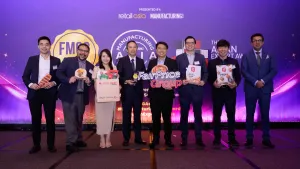
Here are 4 key factors reshaping global food demand
Companies will need to adapt quickly to stay competitive.
As the global food industry looks to the future, several factors are set to reshape demand over the coming years. Population growth, macroeconomic conditions, pricing trends, and shifting consumer preferences, often referred to as "soft drivers", will all play crucial roles in determining the trajectory of food consumption worldwide.
By 2040, the global population will increase by over a billion, mainly in Africa and South Asia, boosting food demand in these regions. However, declining populations in developed countries, alongside the rise of GLP-1 drugs that reduce calorie intake, could lead to a “calorie cliff” in Europe and East Asia. As a result, the ongoing focus on premiumisation, where consumers prioritise higher-quality products over sheer quantity, will become even more pronounced.
Falling global fertility rates, particularly in countries such as China, Brazil, Russia, and Mexico, will pose challenges for categories aimed at children. These shifts may force markets to cater more to aging populations and, interestingly, to pets, whose numbers are on the rise.
Economic growth will continue to influence food consumption, but its impact will vary across markets. In developed markets, economic growth has little effect on food volumes but shifts preferences toward premium products and out-of-home consumption.
In contrast, in developing economies, GDP growth is more strongly linked to food demand. Snack foods like ice cream are especially sensitive to economic conditions, thriving in good times but vulnerable in recessions, whilst staple foods like bread or rice will see steady demand regardless of economic downturns.
Moreover, food prices are likely to continue rising over the long term due to external factors such as climate change and geopolitical disruptions.
The report noted prices won’t return to 2019 levels, and non-essential categories like confectionery will be hardest hit.
Consumers are also becoming less willing to pay premiums for added-value products, slowing down new product launches. In the first half of 2024, global new food brand launches dropped 21% compared to the same period in 2023 and 50% compared to 2021.
Social media, especially TikTok, is speeding up consumer demand for novelty, shortening trend cycles. Whilst it's hard to predict specific trends, broader patterns—such as who will be eating and what they can afford—remain predictable. Short-term trends may grab attention, but long-term demand will be shaped by population dynamics, economic growth, and pricing shifts.

















 Advertise
Advertise





